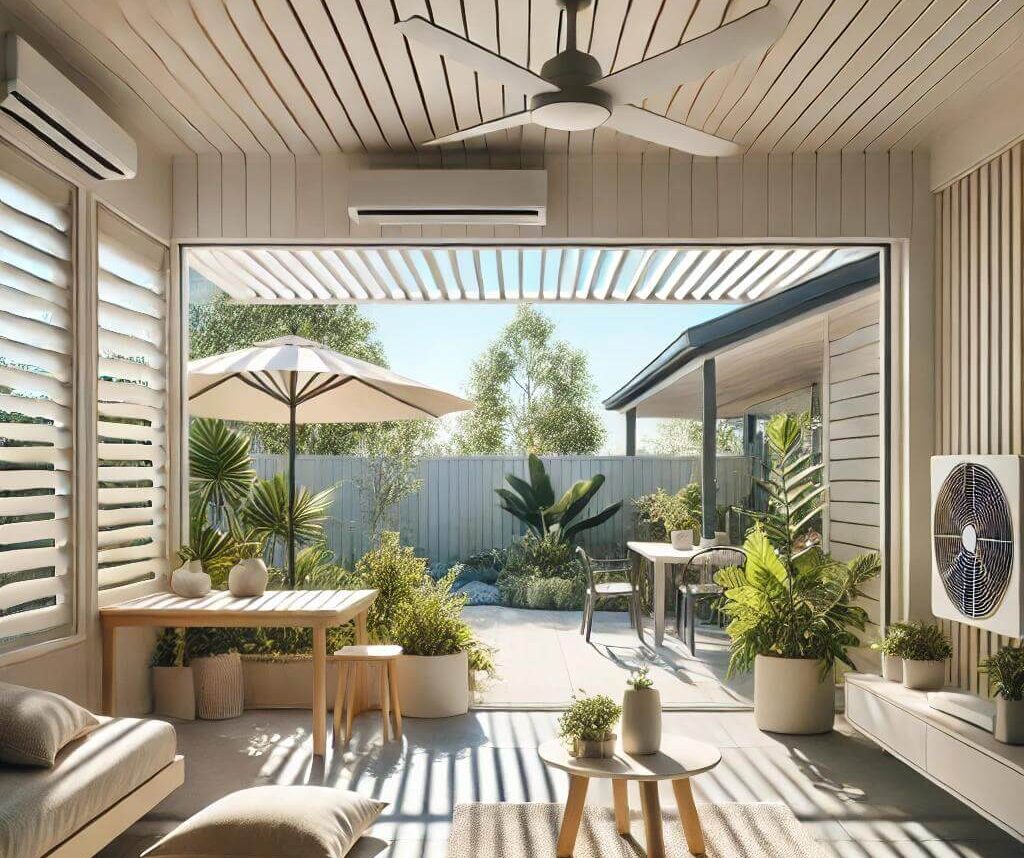For expats new to Australia, the intense summer heat can be a shock to the system. Adapting to this climate requires more than just turning on the air conditioning. Staying cool is not only about comfort but also about finding energy-efficient, practical solutions that work long-term. Here are some of the best strategies to beat the heat and keep your home comfortable, no matter how high the temperature rises outside.
Start with Effective Window Treatments
Windows are a major entry point for heat in any home. To combat this, installing PVC shutters is one of the smartest moves you can make. These shutters are designed to block out the harsh sunlight while maintaining insulation, helping to regulate indoor temperatures. Whether you’re dealing with the glaring morning sun or the relentless afternoon heat, PVC shutters provide a barrier that keeps the heat out and the cool air in.
If you’re looking for a solution tailored to your home, MYT Shutters offers customizable options built to handle Australia’s unique climate challenges. Their durable and low-maintenance designs make them a top choice for those wanting to stay ahead of the summer heat.
Maximise Natural Ventilation
Harnessing natural airflow is another effective way to keep your home cool. During the cooler hours of the evening or early morning, open windows and doors on opposite sides of your home to create a cross-breeze. This helps flush out the warm air that builds up during the day.
When the sun begins to heat up, close everything up and use window treatments or external shading to block the heat. Ceiling and portable fans can also enhance airflow without consuming too much energy.
Invest in Outdoor Shading Solutions
External shading is a game-changer when it comes to reducing the impact of the sun. Awnings, pergolas, or even shade sails can significantly cut down on the amount of direct sunlight hitting your windows and walls. Planting trees or adding tall shrubs near sun-facing windows provides a natural alternative for blocking heat while also enhancing the outdoor aesthetic.
For those with balconies or patios, consider using outdoor blinds or UV-blocking screens. These can reduce the sun’s intensity and protect outdoor spaces from becoming too hot to enjoy.
Reduce Heat from Inside Your Home
It’s easy to forget how much heat is generated inside your home. Cooking on a stovetop, using the oven, or running high-energy appliances like dryers can all raise indoor temperatures. Avoid these activities during the hottest parts of the day. Instead, use outdoor grills, prepare cold meals, or plan meals that require minimal cooking.
Switching to LED lighting can also help, as these bulbs emit significantly less heat than traditional options. Finally, be mindful of devices that generate heat even when not in use—unplug chargers and electronics to minimize their impact.
Adopt Green Practices for Long-Term Cooling
Incorporating greenery into your home’s surroundings isn’t just an environmental choice; it’s also an effective cooling strategy. Trees, climbing plants, and green walls create natural shade and reduce the surrounding air temperature.
Consider planting native Australian flora, which thrives in the climate and requires less water. Over time, these plants can create a cooler microclimate around your home, making it easier to maintain comfortable indoor temperatures without over-relying on air conditioning.
The Best Ways to Keep Your Home Cool: in Conclusion
Adapting to Australia’s heat doesn’t have to be overwhelming. By combining smart investments with simple adjustments such as improving ventilation and minimizing internal heat sources, you can create a cooler, more energy-efficient home. Consider these strategies to take your cooling strategy to the next level and enjoy summer days without breaking a sweat.












